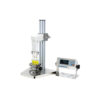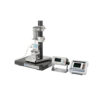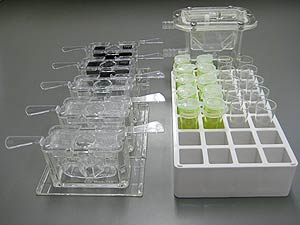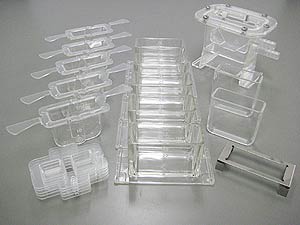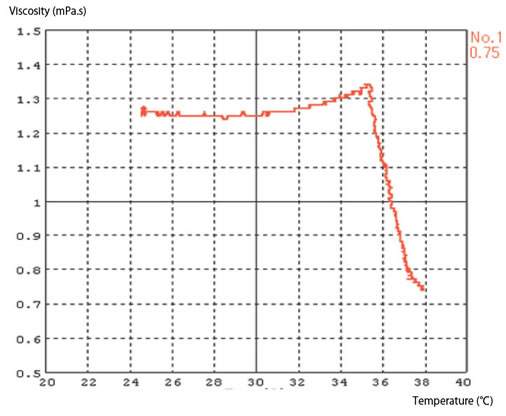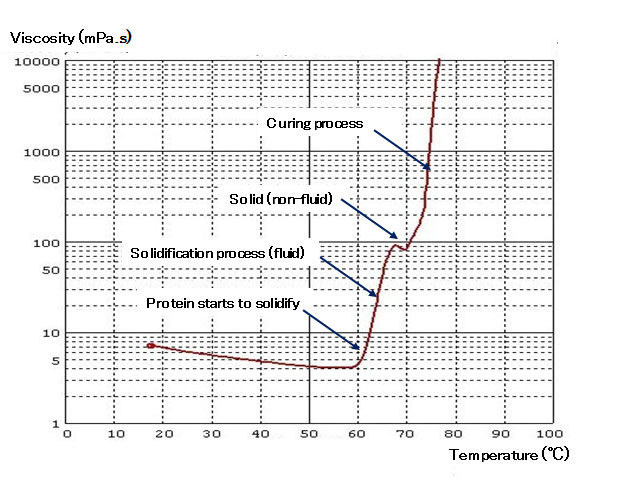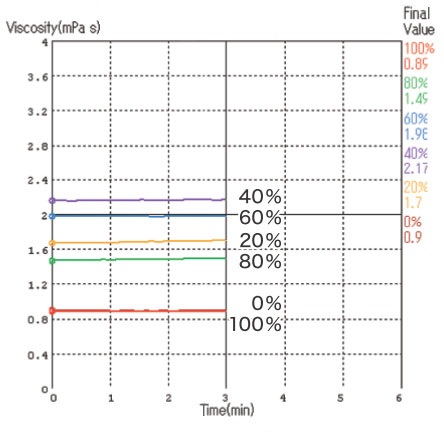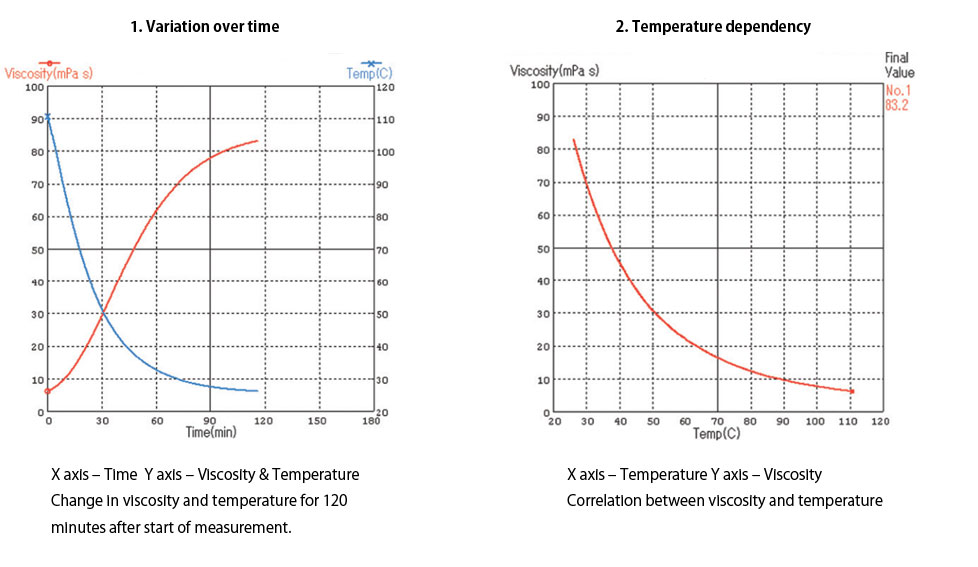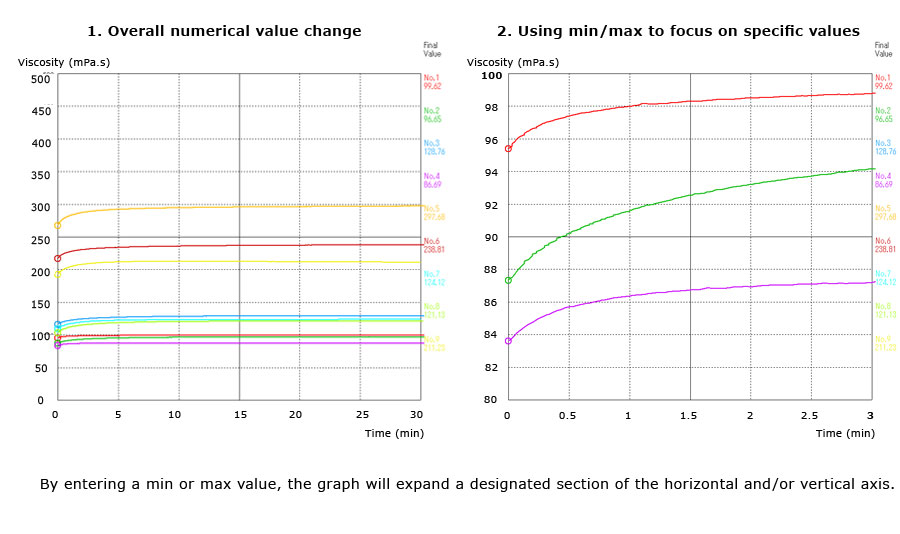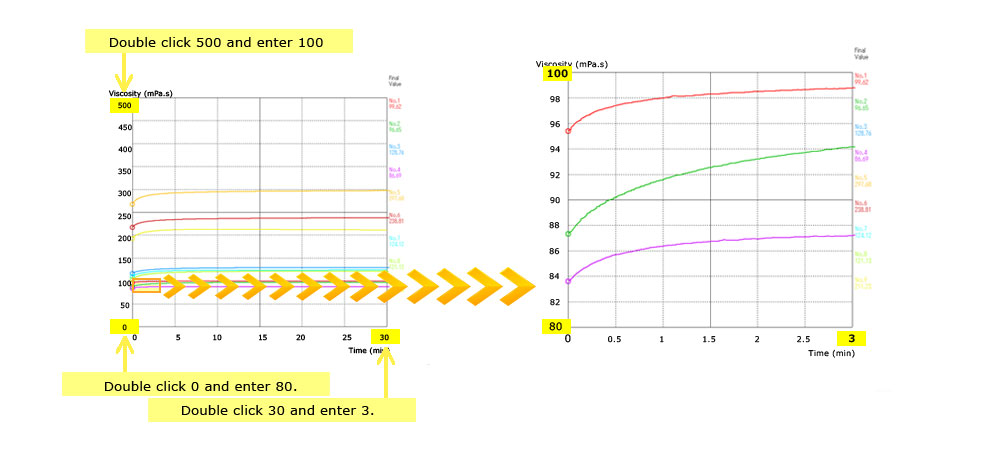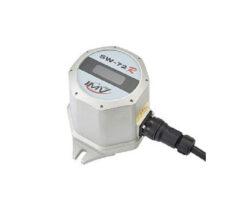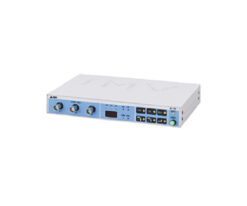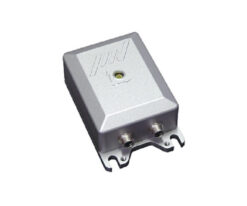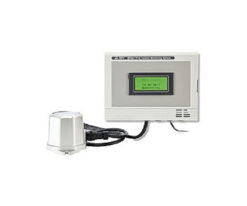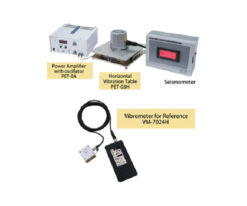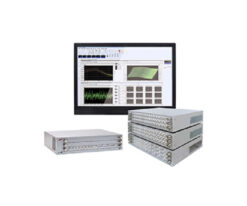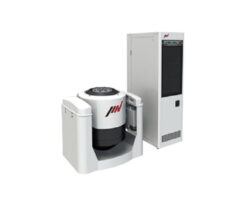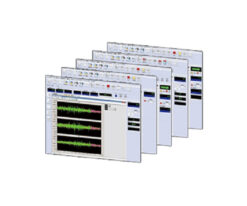DESCRIPTION
2 ml Sample Measurement Now Possible!
| Features | |||||
| Videos | |||||
| External Input / Output | |||||
| RS-232C interface | |||||
| Accessories | |||||
| Click here to see the complete accessory list. | |||||
|
|||||
| Example Measurements with the Tuning Fork Vibro Viscometer (SV/SV-A Series) | |||||
| The SV-10/SV-10A series of tuning fork vibro viscometers are capable of continuous measurement over a range of viscosities from the extremely low (0.3 mPa·s) to the high (10,000 mPa·s). These viscometers are able to easily measure the state transition from sol to gel as there is no need to change sensors during measurement. Measurement intervals can be set freely allowing for continuous 24-hour measurement or measurement of any long term viscosity change. |
|||||
| Gel transition / hydrogel measurement Example) Aqueous gelatin solutionThis example shows viscosity measurement of 2.5% and 5% aqueous gelatin solutions over varying temperature. The horizontal axis shows temperature and the vertical axis shows a logarithm of the viscosity of the aqueous gelatin solutions. There is a clear difference in solidification temperature which is dependent on the concentrations of the aqueous gelatin solutions. 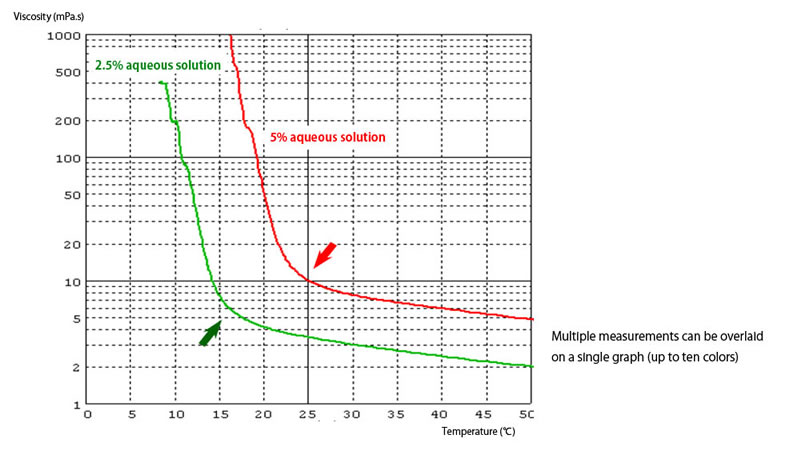
Cloud point measurement This is the result of a measurement taken while a 1% concentration of a non-ionic surfactant was heated. Surfactants become cloudy when they reach a certain temperature. This is called the cloud point and traditionally could only be measured optically.
Rapid Rise in Viscosity (Measurement of the curing point) As egg whites are heated to 60˚C their viscosity will decrease like normal liquids. However, once 60˚ is reached viscosity will increase suddenly, as the proteins in the egg whites clump together.
Measurements at low viscosity The viscosity of varying concentrations of aqueous ethanol solutions at 25˚C was measured with the SV-10A. Viscosity of these solutions was shown to vary with concentration. Alone, both 100% ethanol and 100% water have low viscosities but when they are mixed viscosity increases.
|
|||||
| WinCT-Viscosity data processing software | |||||
| WinCT-Viscosity is dedicated software that makes realtime graphs of data acquired from the SV Series and SV-A Series viscometers (WinCT-Viscosity supports Windows 8). WinCT-Viscosity allows for simple reading, storage, and analysis of measurement data acquired from SV viscometers. WinCT-Viscosity is comprised of three programs. | |||||
Graphing with WinCT-Viscosity (RsVisco)1. The time axis: Track variation over time Example) Engine Oil 1. Variation over time
Example) Thickening Agent 1. Overall numerical value change
It is possible to expand a designated section of the X and Y axes. Double click to overwrite the value.
|
|||||

